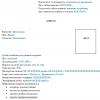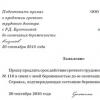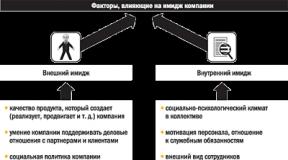The drug ketorol indications for use. Ketorol for injection - instructions for use. Indications for use
"Ketorol" is a highly active non-narcotic anesthetic pharmaceutical agent with a moderate anti-inflammatory effect and an additional antipyretic effect. What helps "Ketorol" in different dosage forms, and for what diseases it is prescribed, is detailed in the medical instructions. The medicine is included in the list of essential medicines that are vital for many pathological conditions.
The active medicinal substance in the preparation is ketorolac (in the form of tromethamine or trometamol).
The drug called "Ketorol" is available in 3 pharmacological forms:
- Convex round tablets in green enteric shell with an S embossed on one side, packed in a paper pack of 20 units. One tablet contains 10 mg of active ingredient.
- Transparent flavored gel for external use in an aluminum tube of 30 g. 1 gram of gel contains 20 mg of the medicinal substance.
- Transparent colorless or pale straw color medicinal solution, prescribed for injection into the muscle and vein. It is poured into ampoules of 1 ml of brown glass, 10 units in a contour transparent blister. 1 ml of solution contains 30 mg of the treating component.
Each dosage form included additional pharmacological substances necessary for conservation, shaping and emulsification.
The choice of the dosage form is determined by the strength of the pain and the patient's condition.
Pharmacological properties and pharmacokinetics
A non-narcotic analgesic is used for the short-term suppression of moderate to severe pain and inflammation. Doctors rarely recommend "Ketorol" for fever, as its effect against fever is rather weak, and there are other medicines that will cope with this task faster.
The pronounced analgesic effect of the drug is associated with inhibition of the work of special enzymes - cyclooxygenase of the first and second types (COX-1 and 2) and a decrease in irritation of pain receptors. Ketorolac inhibits the production of hormone-like substances prostaglandins, which act as regulators of pain, inflammation factors and changes in tissue temperature.
The intensity of the analgesic effect of the drug is much higher than the capabilities of other analgesics and NSAIDs (Paracetamol, Analgin, No-shpa) and is comparable to the activity of opiates, including morphine.
So, after an injection of 30 mg of ketorolac into the muscle, the degree of pain relief will be similar to the use of 12 mg of morphine. At the same time, "Ketorol" has certain advantages over narcotic drugs.
- does not cause drug dependence, since it does not affect opioid receptors;
- does not have a tranquilizing or hypnotic effect;
- does not impair the respiratory process (unlike opioid pain relievers);
- does not cause urinary retention;
- does not directly affect the work of the heart and vascular system does not change heart rate and blood pressure.
These properties of the drug cause a smaller list of undesirable contraindications adverse reactions and more wide range application.
When it enters the body in any dosage form, it is actively absorbed and distributed. More than half of the dose of a medicine that has entered the body is processed in the liver, more than 90% is removed with urine, and only a small part through the intestines.
The half-life of ketorolac during normal kidney function ranges from 3 to 9 hours, depending on the dosage form, dosage of the drug, the patient's age (in weakened and elderly people, due to the suppressed functioning of the kidneys, it increases). With renal dysfunction, cleansing the blood from medicinal substances slows down, and the half-life can increase to 12.5 hours or more.
What Ketorol helps from
"Ketorol", first of all, is necessary for a painful attack, which is accompanied (or not accompanied) by fever and inflammation.

Although the drug is classified as a non-hormonal anti-inflammatory drug (NSAID), its main purpose is precisely in the expressed suppression of intense pain.
The drug is designed to eliminate symptoms, has a short-term effect and does not affect the cause and progression of the underlying pathology.
The main indications for the use of "Ketorol" - pain medium and high intensity in the following pathological conditions:
- renal colic;
- pronounced dental and headache including migraines;
- dislocations, fractures, damage to the ligamentous apparatus of the joint, soft tissue bruises;
- inflammation of tissues in the area of the periarticular bag, tendon, synovium of the joint;
- arthropathies, including psoriatic arthritis;
- degenerative-dystrophic diseases of the spine, ankylosing spondylitis;
- rheumatic diseases;
- neuralgia and neuritis;
- radiculopathy, gout;
- esophageal spasm, pylorospasm;
- inflammation of skeletal muscles (myositis), muscle pain of a different nature;
- malignant processes (including foci of metastases in bone tissue).
In addition, the medication is used today for pain disorders against the background of a severe narcotic withdrawal syndrome.
Ketorolac is actively used for the purpose of pain relief in operative dentistry, in the postpartum and postoperative period after intra-abdominal, gynecological, orthopedic operations.
Instructions for use and dosage
Before prescribing a medication, it is important to establish whether the patient has had previous episodes of allergy to any analgesics and NSAIDs. The patient's condition after taking the first dose is carefully monitored.
Pills and injections
In injections, "Ketorol" is allowed to be used for pain relief with daily use for no longer than 5 days, in tablets - 7 days.

The dosages recommended in the instructions are reduced if possible, taking into account the strength painful sensations... To minimize adverse reactions, it is advisable to reduce the amount of ketorolac to a dose at which pain relief is noted. It is optimal if the medicine is taken sporadically or in a short course.
- Tablets "Ketorol". Patients from 16 years old can take a 10 mg tablet once or up to 4 times in 24 hours, which is determined by the degree and duration of the pain attack. The largest amount in 24 hours is 40 mg. Excessively fatty food delays the onset therapeutic effect for 60 minutes, reducing the content of the medication in the blood.
- "Ketorol" injections. Adults from 16 years old or weighing more than 50 kg are usually given 1 ampoule (30 mg) every 6 to 8 hours, but the total amount of ketorolac per day cannot be more than 90 mg (taking into account taking the medication in tablets). At a time, it is allowed to inject into the muscle or intravenously no more than 60 mg of the therapeutic substance (2 ampoules).
- Patients with chronic diseases kidney, people over 65 years old or weighing less than 50 kg single dose limited to half an ampoule (15 mg), maximum 30 mg. For 24 hours, the total amount of "Ketorol" administered to a patient cannot exceed 60 mg (2 ampoules). Intramuscular injection make 4 - 5 seconds, intravenous infusion is performed within 15 - 17 seconds.
The time of the onset of the maximum effect depends on the dose, the patient's weight, the strength of the painful manifestations. A noticeable weakening of pain after ingestion is recorded after 45 - 80 minutes, after injection into a muscle - after 15 - 30 minutes, into a vein - within 30 seconds to 5 minutes.
Despite the fact that ketorolac is not officially approved for use in childhood and adolescence, it is often used to relieve severe pain after surgery or injuries due to the lack of alternative drugs (other than drugs) with an equally strong effect.
Gel

Gel "Ketorol" 2% is used as an external agent for pain against the background of inflammation and damage to muscles and joints. It is evenly and thinly applied to the focus of maximum pain up to 4 times a day in a volume of 1 - 2 ml (gel column 1 - 2 cm long). The skin must be clean and dry. The area of gel treatment should be free of eczema, abscesses, wounds, ulcers, blisters and other damage. The gel applied to the skin is not allowed to be covered with a medical plaster, an airtight bandage. The duration of the course of local applications is limited to 10 days.
special instructions
"Ketorol", like most NSAIDs, increases irritability and the risk of damage to the gastric mucosa. To prevent such a condition, for the duration of treatment, a parallel intake of funds with omeprazole or esomeprazole, which protect the gastrointestinal mucosa, is required (Omez, Ultop, Losek, Ortanol).

In persons with blood diseases, gastrointestinal ulcers, in patients after and before surgical interventions, the pharmaceutical preparation is used, constantly monitoring blood counts and coagulograms, since ketorolac, although to a non-hazardous extent, nevertheless prolongs the time until the bleeding stops.
With unbearable pain, the simultaneous appointment of narcotic painkillers in reduced doses is allowed.
When drowsiness, weakness, dizziness appear, activity and work should be avoided, in which precision manipulation and reaction speed are required (workers of hot shops, surgeons, industrial climbers, pilots, air traffic controllers, employees of the Ministry of Emergency Situations, transport drivers).
During pregnancy and lactation
In noticeable quantities active ingredient medication passes into breast milk, and about a tenth of the dose received enters the fetal bloodstream through the placenta. In connection with this fact, nursing mothers and patients carrying a child, "Ketorol" is prohibited from prescribing in any form in order to prevent violations of the development of the fetus and baby.

The same prohibition applies to women in labor - the medicine is not used to relieve labor pain, but is used exclusively in postpartum period, while the child should be transferred to artificial nutrition.
Drug interactions
It is necessary to take into account the likelihood of incompatibility or the occurrence of negative effects in the joint appointment of Ketorol with other pharmacological products.
| Medicines in combination with ketorolac | Probable reactions |
|---|---|
| non-hormonal anti-inflammatory drugs, medications with aspirin, calcium, glucocorticosteroids, ethanol, "Corticotropin" | ulceration of the mucous membrane of the digestive tract, bleeding |
| other NSAIDs, including Ksefokam, Indomethacin, Diclofenac, Ibuprofen, Meloxicam, Celecoxib | fluid retention, deterioration of cardiac activity, increased blood pressure |
| Paracetamol, Cyclosporin, ACE inhibitors("Captopril", "Kapoten", "Enalapril", "Fosinopril", "Fosinap", "Fosicard") | kidney damage (nephrotoxicity) |
| "Methotrexate" | kidney and liver damage |
| medical supplies with lithium, gold | increased toxicity |
| "Probenecid" | risk of increased side effects |
| anticoagulants ("Sinkumar", "Warfarex", "Fenilin"), "Heparin", "Froxyparin", thrombolytics ("Streptokinase", "Lanoteplaza"), antiplatelet agents ("Clopidex", "Trental", "Clopidogrel", "Kurantil "," Eptifibatid "), antibiotics-cephalosporins, Valproic acid | risk of hemorrhage, bleeding |
| antihypertensive medicines and diuretics (Furosemide, Lasix, Trigrim) | decrease in the therapeutic effect |
| narcotic analgesics | opiate doses can be significantly reduced while maintaining significant pain relief |
| Insulin, medicines to lower blood sugar | the risk of a sharp drop in glucose levels and the development of hypoglycemic coma (dose recalculation is necessary) |
Before using Ketorol, you should discuss with your doctor the possibility of combining it with other medications that the patient is taking.
Compatibility of Ketorol with alcohol
It is extremely dangerous to take a pharmaceutical product with alcohol. Severe liver poisoning is possible, as well as an additional increase in the effect of ethanol on nervous system with the development of seizures, hallucinations, depression, overexcitation, psychosis.
Contraindications, side effects and overdose
A non-narcotic analgesic is a pharmacological product with a powerful effect and, at the same time, having a serious list of contraindications and additional manifestations that negatively affect the body.

It is forbidden to prescribe an anesthetic drug if conditions such as:
- intolerance to ketorolac and any components of the medication, other NSAIDs;
- allergic reactions that spread to any body system;
- acute period of ulcerative colitis, gastrointestinal ulcers, Crohn's disease;
- any bleeding, hemorrhage, including hemorrhagic stroke;
- heart attack;
- hemophilia, hemorrhages of any type, disorders of blood coagulation indicators;
- severe myocardial failure, condition after heart surgery;
- marked weakening of renal function (Cl creatinine less than 30 ml / min), progressive kidney disease,
- severe liver damage;
- full or partial combination of multiple polyps in the nasal cavity and sinus sinuses, asthma, intolerance to any nonsteroidal anti-inflammatory drugs;
- dehydration, decreased blood volume;
- confirmed hypercalcemia or hyperkalemia;
- weeping with dermatoses, foci of eczema, suppuration, damage to the skin (for gel);
In addition, the use of "Ketorol" is not allowed:
- before prolonged or major surgical procedures with a high risk of bleeding (48 hours before and after surgery);
- for preventive pain relief, maintenance of anesthesia during operations,
- for pain relief during labor.
Conditions when a pharmaceutical product must be used with caution include:
- age up to 12 years for gel, up to 16 and after 65 years - for other dosage forms;
- moderate course of all the above pathologies, with an exacerbation of which the drug is prohibited;
- ischemic disease, vascular damage to the brain, heart;
- arterial hypertension;
- diabetes;
- systemic lupus erythematosus.
Some sources about the pharmaceutical prescribed to limit the dose and duration of Ketorol if the patient receives glucocorticoids (Dexamethasone, Prednisolone), SSRI antidepressants (Sertralin, Citalopram, Paroxetine).
Unwanted effects
Adverse reactions and complications, as a rule, are observed with long-term use or exceeding doses, especially more than 90 mg per day.

Most often noted: stomach pain, loose stools, headache, drowsiness. Less often, patients complain of constipation, heaviness in the stomach, increased pressure, skin rash and itching, stomatitis, heartburn, nasal congestion.
Much less common complications such as:
- bronchospasm, laryngeal edema with shortness of breath;
- vomiting, ulcerative lesion digestive organs, bleeding in the stomach and intestines, blackening of feces and vomit, jaundice, hepatitis, acute pancreatitis;
- back pain, urinary retention, acute renal failure, protein in urine, anemia, purpura, nephritis, swelling of the face, legs, weight gain;
- visual and auditory disorders;
- different types of bleeding, including rectal, nasal, postoperative;
- exfoliative dermatitis with fever, swelling of the tonsils;
- urticaria, acute allergy with shortness of breath, edema of the larynx, tongue, eyelids;
- Lyell's or Stevens-Johnson's syndrome.
When treating large areas of skin with gel or applying the gel under an airtight dressing, there is a high risk of ketorolac affecting the entire body with the development of characteristic side effects.
If any undesirable reactions occur, the drug is discontinued. With the development of acute, life-threatening conditions, an ambulance is immediately called.
Excess dose
An overdose is characterized by the appearance or intensification of already manifested adverse reactions, including the development of hemorrhages, acute kidney failure, meningitis with convulsions, pulmonary edema.

In mild cases, gastric lavage is enough, taking "Polysorb" as an active adsorbent. At serious conditions requires immediate hospitalization for detoxification procedures in the hospital and preservation of body functions. Hemodialysis will not help with an overdose due to the almost 100% connection of ketorolac with plasma proteins.
Analogs
Pharmaceutical products with the same medicinal substance in the composition: "Ketokam", "Dolak", "Ketanov", eye drops Akular. It should be noted that analogues of "Ketorol" in the form eye drops effectively relieve pain in corneal abrasions, after cataract excision, eliminate itching in the eyes, relieve inflammation, are used in the process of eye surgery.

Other powerful pain relievers with a similar effect: Ketonal (ketoprofen), which many experts consider to be an even more powerful pain reliever, Dexonal, Flamadex, Dexalgin.
Dosage form
Film-coated tablets, 10 mg
Compound
One tablet contains
active substance - ketorolac tromethamine 10 mg
Excipients:
microcrystalline cellulose (type 102), pregelatinized corn starch, corn starch, anhydrous colloidal silicon dioxide, magnesium stearate
shell composition: Opadri 03K51148 green (hymethylcellulose (6crs), titanium dioxide E171, triacetin / glycerin, iron (III) oxide yellow E172, dye FD & C No. 1 (diamond blue FCF, aluminum varnish 11-13%)
Description
Tablets of a round shape, with a biconvex surface, covered with a film shell of olive green color, with an engraving "S" on one side and a smooth surface on the other side, with a diameter of (8.20 ± 0.20) mm and a thickness of (3.50 ± 0.20) mm.
Pharmacotherapeutic group
Anti-inflammatory and anti-rheumatic drugs. Non-steroidal anti-inflammatory drugs. Acetic acid derivatives. Ketorolac
ATX code М01АВ15
Pharmacological properties
Pharmacokinetics
Ketorolac tromethamine is a racemic mixture of the enantiometric forms [-] S- and [+] R- with the S form, which has an analgesic effect.
When taken internally, ketorolac is well absorbed from the gastrointestinal tract. The maximum concentration in blood plasma (0.7 - 1.1 μg / ml) is achieved 40 minutes after taking a dose of 10 mg on an empty stomach. Food rich in fat reduces Cmax and delays its achievement by 1 hour.
Ketorol® almost completely binds to plasma proteins (> 99%) due to a small volume of distribution (<0.3 л/кг).
The time to reach equilibrium concentration when taken orally is 24 hours when administered 4 times a day. When taken orally 10 mg, it is 0.39 - 0.79 μg / ml.
Almost all the substance circulating in the blood plasma is ketorolac (96%) or its pharmacologically inactive metabolite p-hydroxyketorolac.
Ketorolac is mainly excreted through the kidneys by excretion of ketorolac and its metabolites. In urine, up to 92% of the administered dose of the drug is found, 40% - in the form of metabolites, 60% - in the form of an unchanged substance, 6% of the administered dose - through feces. The drug passes through the placental barrier by 10%. Found in low concentrations in breast milk. It passes through the blood-brain barrier poorly. The S-enantiomer is excreted twice as fast 2.5 h (SD ± 0.4) than the R-enantiomer - 5 h (SD ± 1.7) and clearance does not depend on the route of drug administration, it follows that the ratio of plasma S / R concentrations decreases with time after each dose. Metabolites have no significant analgesic activity.
In elderly patients (over 65 years of age), the half-life of the terminal phase, compared with that in young people, increases to 7 hours (from 4.3 to 8.6 hours). The total plasma clearance, in comparison with young people, can be reduced to an average of 0.019 l / h / kg.
Renal failure
When renal function is impaired, the elimination of ketorolac slows down, as evidenced by the lengthening of the half-life, which is between 6 and 19 hours (depending on the degree of insufficiency) and leads to a decrease in the total plasma clearance compared to young healthy volunteers.
There is a poor association between creatinine clearance and total clearance of ketorolac tromethamine in the elderly and in the population with renal failure (r = 0.5).
In patients with renal disease, the area under the curve of each enantiomer increased by approximately 100% compared to healthy volunteers. The volume of distribution doubles for the S-enantiomer and increases by 1/5 for the R-enantiomer. An increase in the volume of distribution of ketorolac tromethamine means an increase in the unbound fraction.
The rate of elimination decreases approximately in proportion to the degree of renal impairment, with the exception of patients with severe renal impairment. In such patients, the plasma clearance of ketorolac becomes slightly higher than expected for a given degree of renal damage.
Liver failure
There is no significant difference in the calculation of the half-life, area under the curve.
Pharmacodynamics
Ketorol® is a non-steroidal anti-inflammatory drug (NSAID) with analgesic and anti-inflammatory effects. The main mechanism of action of ketorol, like other NSAIDs, is manifested in its pharmacological effect - inhibition of prostaglandin synthesis. NSAIDs are most active in the periphery.
Ketorol® does not have a sedative or anxiolytic effect. The biological activity of ketorolac tromethamine is associated with form S. The peak analgesic effect of Ketorol occurs after 2-3 hours.
Indications for use
Short-term relief of acute pain syndrome of moderate and severe severity, as well as with the necessary analgesia with opioid analgesics in the postoperative period.
Method of administration and dosage
You should carefully consider the potential benefits and risks of using Ketorol before deciding to use it.
The total duration of treatment with Ketorol injection and Ketorol tablets should not exceed 5 days due to the risk of an increase in the frequency and severity of adverse reactions.
For patients from 18 to 64 years old
Ketorol tablets are taken once 20 mg (2 tablets), followed by 10 mg (1 tablet) after 4-6 hours 4 times a day, no more than 40 mg / day.
For patients ≥ 65 years of age with renal impairment and / or weight< 50 кг:
Ketorol tablets single 10 mg (1 tablet) followed by 10 mg every 4-6 hours four times a day, not more than 40 mg / day.
The minimum effective dose must be used.
Do not shorten the dosing interval by 4 - 6 hours.
Side effects
With an increase in the dose of the drug, the risk of an increase in the frequency and severity of adverse reactions increases. Patients should be warned of serious adverse reactions of the drug, such as ulceration of the gastrointestinal tract mucosa, bleeding and perforation, postoperative bleeding, acute renal failure, anaphylactic and anaphylactoid reactions, liver failure.
In patients taking Ketorol or other non-steroidal anti-inflammatory drugs (NSAIDs), the most common (approximately 1% to 10% of patients) were observed:
From the gastrointestinal tract: abdominal pain *, constipation / diarrhea dyspepsia *, flatulence, gastrointestinal ulcer (stomach / duodenum), gastrointestinal bleeding / perforation, heartburn, nausea *, stomatitis, vomiting.
From other systems: impaired renal function, anemia, dizziness, drowsiness, edema, an increase in the content of liver enzymes,
headaches *, hypertension, prolonged bleeding time, itching, skin rashes, tinnitus, sweating.
* Incidence greater than 10%
Additionally, the following adverse events were reported:
General reactions: fever, infections, sepsis
Cardiovascular system: heart failure, tachycardia (heart palpitations), pallor, fainting.
Skin reactions: alopecia, photosensitivity, urticaria.
Gastrointestinal tract: anorexia, dry mouth, belching, esophagitis, thirst, gastritis, glossitis, hepatitis, increased appetite, jaundice, rectal bleeding.
Blood and lymphatic system: ecchymosis, eosinophilia, epistaxis, leukopenia, thrombocytopenia.
Metabolic disorders: weight change.
Nervous system: confusion, anxiety, asthenia, depression, euphoria, extrapyramidal symptoms, hallucinations, hyperkinesia, inability to concentrate, insomnia, nervousness, paresthesia, drowsiness, stupor, tremors, dizziness, malaise.
Reproductive system (women): infertility.
Respiratory system: asthma, cough, shortness of breath, pulmonary edema, runny nose.
Organs of touch: changes in taste, visual impairment, hearing loss.
Urogenital tract: cystitis, dysuria, hematuria, increased frequency of urination, interstitial, nephritis, oliguria / polyuria, proteinuria, renal failure, urinary retention.
Rarely observed adverse reactions are:
General reactions: Quincke's edema, death, hypersensitivity reactions such as anaphylaxis, anaphylactoid reactions, laryngeal edema, tongue edema, myalgia
Cardiovascular system: arrhythmia, bradycardia, chest pain, redness, hypotension, myocardial infarction, vasculitis.
Skin reactions: exfoliative dermatitis, erythema multiforme, Lyell's syndrome, bullous reactions including Stevens-Johnson syndrome and toxic epidermal necrolysis.
Gastrointestinal system: acute pancreatitis, liver failure, nonspecific ulcerative stomatitis, exacerbation of inflammatory bowel disease (ulcerative colitis, Crohn's disease).
Blood and lymphatic system: agranulocytosis, aplastic anemia, hemolytic anemia, lymphadenopathy, pancytopenia, postoperative bleeding.
Metabolic disorders: hyperglycemia, hyperkalemia, hyponatremia.
Nervous system: aseptic meningitis, convulsions, coma, psychosis.
Respiratory system: bronchospasm, respiratory depression, pneumonia
Organs of touch: conjunctivitis
Urogenital tract: flank pain with hematuria and / or azotemia, hemolytic uremic syndrome or without it.
Contraindications
Hypersensitivity to ketorolac or other nonsteroidal anti-inflammatory drugs
Complete or incomplete combination bronchial asthma, recurrent polyposis of the nose and paranasal sinuses and intolerance to acetylsalicylic acid or other NSAIDs (including a history)
Hives, rhinitis caused by taking NSAIDs (in history)
Intolerance to drugs of the pyrazolone series
Hypovolemia (regardless of the underlying cause)
Confirmed hyperkalemia
Erosive and ulcerative lesions of the gastrointestinal tract in the acute phase, gastrointestinal bleeding, including a history
Inflammatory bowel disease
Hypocoagulation (including hemophilia)
Hematopoietic disorders
Severe renal failure (creatinine clearance less than 30 ml / min)
Severe liver failure or active liver disease
Concomitant use with other non-steroidal anti-inflammatory drugs
Simultaneous reception with probenecid
Simultaneous reception with pentoxifylline
High risk of bleeding (including after surgery
Suspected or confirmed cerebrovascular bleeding, hemorrhagic diathesis,
Persons with hereditary fructose intolerance, deficiency of the enzyme lapp-lactase, glucose-galactose malabsorption
Pregnancy, childbirth and lactation
Children and adolescents under 18 years of age (efficacy and safety have not been established)
As a prophylactic analgesic before any major surgery.
For the treatment of postoperative pain in coronary artery bypass grafting.
Ketorolac is not indicated for the treatment of chronic pain.
Drug interactions
Ketorolac exhibits a strong degree of binding to human plasma proteins (on average by 99.2%), while the binding is independent of concentration.
Ketorolac should not be used with other drugs based on ASA = ASA (acetylsalicylic acid, aspirin) or with other NSAIDs (non-steroidal anti-inflammatory drugs), including selective cyclooxygenase-2 inhibitors, as this may increase the risk of induction of serious adverse events associated with by the action of NSAIDs (see section on contraindications).
Ketorolac inhibits platelet aggregation, reduces the concentration of thromboxane and increases the duration of bleeding. In contrast to the prolonged effects of aspirin, platelet function returns to normal within 24-48 hours after discontinuation of ketorolac.
The use of ketorolac in combination with anticoagulants, such as warfarin, is contraindicated, since the combined use of NSAIDs and anticoagulants can increase the anticoagulant effect (see section on contraindications).
Although studies do not indicate a significant degree of interaction between ketorolac and warfarin or heparin, with the simultaneous use of ketorolac and therapeutic drugs that affect hemostasis, including therapeutic doses of anticoagulants (warfarin), prophylactic low doses of heparin (2500-5000 units every 12 hours ) and dextrans, an increased risk of bleeding may be associated.
According to available information, with the use of some drugs that inhibit the synthesis of prostaglandins, inhibition of renal clearance of lithium is observed, leading to an increase in the concentration of lithium in the plasma. During therapy with ketorolac, cases of increased plasma lithium concentrations have been reported.
Probenecid should not be used concomitantly with ketorolac due to the increased plasma concentration of ketorolac and its half-life.
NSAIDs should not be used for eight to twelve days after using mifepristone, as NSAIDs can weaken the effects of mifepristone.
When ketorolac is used concomitantly with oxpentifylline, an increased tendency to bleed occurs.
Use Ketorol concurrently with other drugs with caution:
As with all NSAIDs, caution should be exercised when using the drug together with corticosteroids due to the increased risk of ulceration or bleeding in the gastrointestinal tract (see the Special Instructions section).
There is an increased risk of gastrointestinal bleeding (see the Special Instructions section) when antiplatelet agents and selective serotonin reuptake inhibitors (SSRIs) are combined with NSAIDs.
According to the literature, some drugs that inhibit prostaglandin synthesis reduce the clearance of methotrexate, and thus, possibly, increase its toxicity.
Ketorolac tromethamine does not affect the binding of digoxin to blood proteins. In vitro studies showed that at therapeutic concentrations of salicylate (300 μg / ml), the binding of ketorolac decreased from approximately 99.2% to 97.5%, which is a calculated two-fold increase in the concentration of unbound ketorolac in blood plasma. Therapeutic concentrations of digoxin, warfarin, ibuprofen, naproxen, piroxicam, acetaminophen (paracetamol), phenytoin, and tolbutamide do not affect protein binding of ketorolac.
Combined use with diuretics can lead to a decrease in the diuretic effect and an increased risk of developing nephrotoxicity of NSAIDs.
As for all NSAIDs, the drug should be used with caution with the concurrent use of cyclosporine due to the increased risk of nephrotoxicity.
There is a risk of developing nephrotoxicity if NSAIDs are used in conjunction with tacrolimus.
NSAIDs can reduce the effects of diuretics and antihypertensive drugs. With the use of ACE = ACE (angiotensin converting enzyme) inhibitors and / or angiotensin II receptor antagonists in combination with NSAIDs, the risk of developing acute renal failure, which is usually reversible, may be increased in some patients with impaired renal function (for example, in dehydrated patients or elderly patients).
Therefore, the combination of drugs should be done with caution, especially in the elderly. Patients should be properly (as accurately as possible) dosage calculated, while attention should be paid to monitoring renal function at the beginning of concomitant therapy and periodically in the subsequent period.
NSAIDs can exacerbate heart failure, decrease GFR = GFR (glomerular filtration rate) and increase the level of cardiac glycosides in plasma when used together with cardiac glycosides.
Ketorolac has been shown to reduce the need for concomitant opioid analgesia when used to relieve postoperative pain.
Animal data show that NSAIDs may increase the risk of seizures associated with the use of quinolone antibiotics. Patients taking concomitantly NSAIDs and quinolones may have an increased risk of developing seizures.
The use of NSAIDs together with zidovudine increases the risk of hematological toxicity. There is evidence of an increased risk of hemarthrosis (accumulation of blood in the joint cavity) and hematomas in HIV (+) = HIV in patients with hemophilia receiving concomitant treatment with zidovudine and ibuprofen.
When taken with antiepileptic drugs (phenytoin, carbamazepine), the frequency of seizures increases. When taken simultaneously with psychotropic drugs (fluoxetine, thiothixine, alprazolam), patients experience hallucinations.
With the simultaneous administration of ketorol and non-depolarizing muscle relaxants, patients develop shortness of breath.
special instructions
Since NSAIDs reduce platelet aggregation, it is necessary to prescribe ketorolac with caution to patients with impaired blood coagulation.
Undesirable effects can be minimized by using the lowest effective dose for the shortest period of time according to the control symptoms.
Gastrointestinal ulcers, bleeding and perforation
Gastrointestinal ulcers, bleeding, and perforation have been reported that can be fatal with nonsteroidal anti-inflammatory drug therapy, including ketorolac, and may occur at any time during treatment, with or without warning symptoms or previous serious gastrointestinal problems tract in the anamnesis.
Increased rates of clinically serious gastrointestinal bleeding were observed in patients under 65 years of age who received an average daily dose of more than 90 mg of ketorolac intramuscularly compared with patients who received parenteral opiates.
Elderly people have an increased incidence of side effects due to the use of non-steroidal anti-inflammatory drugs, especially gastrointestinal bleeding and perforation, which can be fatal.
The risk of gastrointestinal bleeding, ulcers or perforation increases with an increase in the dose of non-steroidal anti-inflammatory drugs, including intravenous ketorolac, in patients with a history of ulcers, especially complicated by bleeding or perforation, or in the elderly. The risk of clinically serious gastrointestinal bleeding is dose dependent. In these patients, treatment should be started with the lowest dose available. For these patients, as well as for patients requiring concomitant use of low-dose aspirin or other drugs that may also increase gastrointestinal risks, combination therapy with cytoprotectors (eg, misoprostol or proton pump inhibitors) should be prescribed. This age-related risk group for gastrointestinal bleeding is common to all NSAIDs. Compared with young patients, in elderly people, the plasma half-life is increased and the plasma clearance of ketorolac is reduced. A longer interval between doses of the drug is recommended.
Nonsteroidal anti-inflammatory drugs should be used with caution in patients with a history of inflammatory bowel disease (ulcerative colitis, Crohn's disease), as these conditions may worsen. Patients with a history of gastrointestinal toxicity, especially in the elderly, should report all unusual intra-abdominal symptoms (especially gastrointestinal bleeding), especially in the initial stages of treatment. If gastrointestinal bleeding or ulceration occurs in patients taking intravenous ketorolac, treatment should be discontinued.
Precautions are advised in patients concurrently receiving drugs that may increase the risk of ulcers or bleeding, such as oral corticosteroids, certain serotonin reuptake inhibitors, or anti-platelet drugs such as aspirin.
The use of the drug in patients taking anticoagulants such as warfarin is contraindicated.
As with other non-steroidal anti-inflammatory drugs, the percentage of patients and the degree of gastrointestinal complications that arise in them may increase due to an increase in the dose and duration of treatment with ketorolac when administered intravenously. The risk of clinically serious gastrointestinal bleeding depends on the dose of the drug. This is especially true for elderly patients who take an average daily dose of more than 60 mg of ketorolac intravenously. A history of peptic ulcer disease increases the likelihood of serious gastrointestinal complications during the use of ketorolac therapy.
Hematological effects
Patients with coagulation disorders should not take Ketorolac. Patients receiving anticoagulation therapy are at risk of bleeding when taking Ketorolac simultaneously with these drugs. The simultaneous use of ketorolac and a low prophylactic dose of heparin (2500 - 5000 units every 12 hours), as well as dextran, has not been thoroughly studied, and therefore can also cause a high likelihood of bleeding. Patients who are already on anticoagulants or are receiving low-dose heparin should not use ketorolac. Patients taking other drugs that have a negative effect on hemostasis should be monitored when using Ketorolac. In controlled clinical trials, the incidence of clinically significant postoperative bleeding was less than 1%.
Ketorolac inhibits platelet aggregation and prolongs bleeding time. In patients with normal blood clotting, the coagulation time increased, but within the normal range from two to eleven minutes. In contrast to the long-term effect of aspirin, platelet function returns to normal within 24 to 48 hours after ketorolac is discontinued.
There are reports of postoperative wound blood loss associated with perioperative use of Ketorolac with intramuscular or intravenous administration. Thus, ketorolac should not be used in patients who have had surgery with a high risk of bleeding. Special care should be taken in situations that do not allow abnormalities in hemostasis, for example, in cosmetic or one-day surgery, during prostate resection or tonsillectomy. With the use of Ketorolac, signs of wound bleeding and nosebleeds have been reported. Physicians should be alert to the pharmacological similarities between ketorolac and other non-steroidal anti-inflammatory drugs that inhibit cyclooxygenase, as well as the risk of bleeding, especially in the elderly.
Skin reactions
Serious skin reactions, some of them fatal, including exfoliative dermatitis, Stevens-Johnson syndrome and toxic epidermal necrolysis, have been reported very rarely in association with the use of nonsteroidal anti-inflammatory drugs. Patients at risk of developing such reactions were identified at the very beginning of therapy: such reactions in most cases occurred in the first month of treatment. Treatment with ketorolac should be discontinued at the first manifestation of a skin rash, mucosal damage or other signs of hypersensitivity to the drug.
Systemic lupus erythematosus and Sharpe syndrome
Patients with systemic lupus erythematosus and Sharp's syndrome are at risk for aseptic meningitis.
Sodium / fluid retention in cardiovascular disease and peripheral edema
Patients with a history of hypertension and / or heart failure should be treated with caution, as fluid retention and swelling have been reported in connection with nonsteroidal anti-inflammatory drug therapy.
Fluid retention, hypertension and peripheral edema have been observed in some patients taking non-steroidal anti-inflammatory drugs, including ketorolac, so this drug should be taken with caution in patients with heart failure, hypertension, or similar pathologies.
Cardiovascular and cerebrovascular effects of the drug
For patients with a history of hypertension and / or mild to moderate congestive heart failure, appropriate monitoring and consultation is necessary, as fluid retention and swelling have been reported due to the use of non-steroidal anti-inflammatory drugs.
Epidemiological data suggest that the use of coxibs or some nonsteroidal anti-inflammatory drugs (especially in high doses) may cause a slight increase in the risk of arterial thrombotic complications (for example, myocardial infarction or stroke). Despite the fact that ketorolac did not reveal the ability to increase the number of thrombotic complications such as myocardial infarction, there is still insufficient data on the basis of which such a risk should be excluded when using ketorolac.
Patients with uncontrolled arterial hypertension, chronic heart failure, established ischemic heart disease, peripheral arterial disease and / or cerebrovascular disorder should take ketorolac only after a thorough examination. A similar decision should be made before starting treatment for patients with a risk factor for cardiovascular disease (eg hypertension, hyperlipidemia, diabetes mellitus and smoking).
Cardiovascular disorders, renal and liver dysfunctions
Caution should be exercised in patients with pathologies that may cause a decrease in blood volume and / or renal blood flow, in which renal prostaglandins play a supporting role in providing renal perfusion. In such patients, the use of non-steroidal anti-inflammatory drugs can, depending on the dose of the drug, cause a weakening of the renal prostaglandin structure and can provoke overt renal failure. Patients who are depleted in volume due to blood loss or severe dehydration, patients with impaired renal function, heart failure, impaired liver function, the elderly, and patients taking diuretics are at great risk of this reaction. Renal function should be monitored in these patients. Usually, after the termination of therapy with non-steroidal anti-inflammatory drugs, recovery follows before the start of treatment. Impaired recovery of lost fluid / blood during surgery, causing hypovolemia, can cause renal dysfunction, which in turn can be exacerbated by the use of Ketorolac. Thus, dehydration should be corrected and a specialist's strict observation of serum urea and creatinine, diuresis should be recommended until the patient is normovolemic. For patients on renal dialysis, the clearance of ketorolac was reduced to about half the normal value and the half-life was increased by about 3 times.
Effects on the kidneys
As with other non-steroidal anti-inflammatory drugs, ketorolac should be used with caution in patients with impaired renal function or a history of kidney disease, as it is a potent inhibitor of prostaglandin synthesis. Care should be taken, since nephrotoxicity has been identified with the use of ketorolac and other non-steroidal anti-inflammatory drugs in patients with pathologies that cause a decrease in circulating blood volume and / or renal blood flow, in which renal prostaglandins play a supporting role in maintaining renal perfusion.
In such patients, the use of ketorolac or other non-steroidal anti-inflammatory drugs can, depending on the dosage, provoke a reduction in renal prostaglandin formation and can cause overt renal failure or decompensated renal failure. Patients with impaired renal function, hypovolemia, heart failure, liver dysfunction, as well as those taking diuretics and the elderly are at great risk of such a reaction. After you stop taking ketorolac or other nonsteroidal anti-inflammatory drugs, you usually recover to the state before you start taking the drug.
As well as with other drugs that slow down the synthesis of prostaglandin, it was reported that an increase in serum urea, creatinine and potassium was reported during the use of ketorolac trometamol, which may occur after a single dose of the drug.
Patients with impaired renal function: Since ketorolac trometamol and its metabolites are excreted primarily by the kidneys, patients with moderate to severe impairment of renal function (serum creatinine more than 160 μmol / l) are contraindicated to take Ketorolac. Patients with weaker renal impairment should receive a reduced dose of ketorolac (not exceeding 60 mg / day intramuscularly or intravenously) and their renal status should be under constant medical supervision.
Use for patients with impaired liver function: In patients with hepatic impairment due to cirrhosis, no clinically important changes in ketorolac clearance or terminal half-life were observed.
Boundary increases in one or more hepatic function indicators may appear. These disorders may be variable, may remain unchanged, or may progress with continued therapy. Significant increases (3 times higher than the norm) in serum alanine aminotransferase or aspartate aminotransferase were observed in control clinical trials in less than 1% of patients. With developing clinical signs or symptoms associated with hepatic diseases, or with the appearance of systematic manifestations of diseases, Ketorolac should be discontinued.
Anaphylactic (pseudo-anaphylactic) reactions
Anaphylactic (pseudo-anaphylactic) reactions (including, but not limited to, anaphylaxis, bronchospasm, flushing, rash, hypotension, laryngeal edema and angioedema) can manifest as in patients with hypersensitivity to aspirin, other non-steroidal anti-inflammatory drugs and intravenous drugs such as ketogenic in patients without such a history. Such phenomena can also appear in patients with a history of Quincke's edema, bronchospastic reactivity (eg asthma) or nasal polyps. Pseudo-anaphylactic reactions such as anaphylaxis can be fatal. Thus, ketorolac should not be used for patients with a history of asthma, as well as for patients with pronounced or partial nasal polyp syndrome, Quincke's edema and bronchospasm.
Precautions and Impact on Non-Reproductive Function
The use of Ketorolac, as well as other drugs that slow down the synthesis of cyclooxygenase / prostaglandin, can impair reproductive function, as a result of which the drug is not recommended for women trying to get pregnant. Women who have difficulty conceiving or undergoing a study of reproductive function should discontinue the use of Ketorolac.
Fluid retention and swelling
It has been reported about fluid retention, hypertension and edema with ketorolac and therefore, the drug should be used with caution in patients with heart failure, hypertension or similar conditions.
Drug abuse and dependence
Ketorolac is not addictive. No symptoms associated with discontinuation of the drug, and after the sudden cessation of intravenous use of ketorolac, were not observed.
Features of the effect of the drug on the ability to drive a vehicle or potentially dangerous mechanisms
Since in patients with the appointment of ketorol, side effects develop from the central nervous system (dizziness, drowsiness) and from the sensory organs (hearing loss, ringing in the ears, visual impairment), it is recommended to avoid performing work requiring increased attention and quick reaction.
Overdose
Symptoms: abdominal pain, nausea, vomiting, peptic ulcer of the stomach and duodenum, erosive gastritis, impaired renal function, metabolic acidosis. Rarely, but possible gastrointestinal bleeding, acute renal failure.
Ketorol is a drug, the active substance of which is ketorolac, belongs to NSAIDs, has analgesic, anti-inflammatory and antipyretic effects.
It is used to eliminate pain syndrome of varying intensity and etiology (including postoperative pain and cancer pain).
On this page you will find all the information about Ketorol: full instructions for use for this drug, average prices in pharmacies, complete and incomplete analogues of the drug, as well as reviews of people who have already used Ketorol. Want to leave your opinion? Please write in the comments.
Clinical and pharmacological group
NSAIDs with a pronounced analgesic effect.
Conditions of dispensing from pharmacies
Dispensed by prescription.
Prices
How much do Ketorol tablets cost? The average price in pharmacies is 45 rubles.
Release form and composition
Ketorol is produced in the form of tablets coated with a special soluble green shell. The biconvex shape of the tablet makes it easier to swallow the medicine.
- All dosage forms of Ketorol contain ketorolac in various concentrations as an active substance. So, tablets contain 10 mg of ketorolac, in a solution - 30 mg in 1 ml, and in a gel - 20 mg in 1 g (2%).
Each tablet has a special stamping in the form of the Latin letter S. The tablets are packaged in 10 pieces in a plastic blister with a metal coating. There may be a different number of blisters in the package, from which the price of the drug is radically different.
Pharmacological effect
Ketorol is a non-steroidal anti-inflammatory drug with a predominantly analgesic effect. The active ingredient of the drug is ketorolac (ketorolac tromethamine). Ketorolac has a moderate antipyretic property, anti-inflammatory effect and a pronounced analgesic effect.
Ketorolac predominantly in peripheral tissues causes an indiscriminate suppression of the activity of cyclooxygenase enzymes of types 1 and 2, as a result of which inhibition of the formation of prostaglandins is observed. Prostaglandins play an important role in the onset of pain, inflammatory reactions and the mechanism of thermoregulation. According to the chemical structure, the active substance of Ketorol is a racemic mixture of + R- and -S- enantiomers, and the analgesic effect of the drug is due precisely to the -S-enantiomers.
Ketorol does not affect opioid receptors, does not depress the respiratory center, does not have a sedative and antidepressant effect, and does not cause drug dependence. The analgesic effect of Ketorol is comparable in strength to morphine and is much more superior to non-steroidal anti-inflammatory drugs of other groups. The onset of analgesic action after intramuscular administration or oral administration begins in 0.5 and 1 hour, respectively. The maximum analgesic effect is observed after 1-2 hours.
Indications for use
In the form of a solution and tablets, Ketorol is used to relieve pain syndrome of various origins of medium and strong intensity:
- Sprains, sprains, other injuries and their consequences;
- Rheumatic diseases;
- Toothache;
- Radiculitis, neuralgia;
- Myalgia, arthralgia;
- Pain in the postoperative and postpartum period;
- Oncological diseases.
In the form of a gel, the drug is used topically for pain syndrome caused by the following diseases:
- Bursitis, epicondylitis, tendinitis, synovitis;
- Rheumatic diseases;
- Radiculitis, neuralgia;
- Arthralgia, myalgia;
- Injuries (damage to ligaments, bruises and inflammation of soft tissues, including those of post-traumatic origin).

Contraindications
- Hyperkalemia;
- Lactase deficiency;
- Patient age up to 16 years;
- Pregnancy and lactation;
- Gastrointestinal bleeding or suspicion of them;
- Ulcerative colitis or in the acute phase;
- A history of asthma attacks, bronchospasm, frequent obstructive bronchitis;
- Severe damage to the liver and kidneys, accompanied by disruption of the work of these organs;
- Hereditary blood diseases, accompanied by a violation of its coagulation function;
- Individual intolerance to acetylsalicylic acid or drugs from the group of non-steroidal anti-inflammatory drugs;
- Chronic diseases of the gastrointestinal tract with the presence of ulcerative erosive surfaces
Relative contraindications include:
- Cardiac ischemia;
- Diabetes;
- Heart failure;
- Cholestasis;
- The age of the patients is over 60 years old;
- Simultaneous administration of anticoagulants or antiplatelet agents.
Application during pregnancy and lactation
Solution and tablets are contraindicated during pregnancy and breastfeeding.
External use is allowed in the 1st and 2nd trimesters, however, after 27 weeks, the use of the gel can cause prolonged pregnancy or a complicated course of childbirth.
Instructions for use
The instructions for use indicate that Ketorol tablets are taken orally in a single dose of 10 mg.
- With severe pain syndrome, the drug is taken repeatedly at 10 mg up to 4 times / day, depending on the severity of the pain. The maximum daily dose is 40 mg. The minimum effective dose should be used. When taken orally, the duration of the course of treatment should not exceed 5 days.
- When switching from parenteral administration of the drug to its intake, the total daily dose of both dosage forms on the day of transfer should not exceed 90 mg for patients aged 16 to 65 years and 60 mg for patients over 65 years of age or with impaired renal function. In this case, the dose of the drug in tablets on the day of the transition should not exceed 30 mg.
Side effects
Ketorol tablets and injections can provoke such undesirable reactions in patients as:
- bronchospasm, laryngeal edema, rhinitis;
- increased blood pressure, fainting, pulmonary edema;
- rectal, nasal, postoperative bleeding;
- diarrhea, stomach pain, vomiting, constipation, flatulence, stomatitis, nausea, heartburn;
- weight gain, swelling of feet, fingers, ankles, legs, face, tongue, excessive sweating, fever;
- headache, drowsiness, dizziness, hyperactivity, depression, ringing in the ears, hearing loss, blurred vision.
- itching, hives, discoloration of the face, skin rash, swelling of the eyelids, shortness of breath, wheezing, heaviness in the chest;
- back pain, acute kidney failure, frequent urination, nephritis (inflammation of the kidneys), decreased or increased volume of urine;
- leukopenia (an increase in leukocytes in the blood), eosinophilia (an increase in the number of eosinophils), anemia (a decrease in the number of red blood cells or hemoglobin);
- purpura, skin rash, urticaria, Lyell's syndrome (allergic dermatitis as a reaction to drugs), Stevens-Johnson syndrome (the appearance of blisters on the skin and mucous membranes of various organs).
Overdose
Possible signs of an overdose of Ketorol: nausea, abdominal pain, vomiting, peptic ulcers or erosive lesions of the gastrointestinal tract, metabolic acidosis, renal dysfunction.
Treatment: gastric lavage followed by the appointment of adsorbent drugs, symptomatic treatment. It is not excreted to a large extent by dialysis methods.
special instructions
- When using tablets for more than 5 days, the risk of side effects in the patient increases, therefore, in the absence of the expected therapeutic effect, you should consult a doctor again.
- With a significantly pronounced pain syndrome or the presence of contraindications for oral administration of the drug, Ketorol is prescribed to the patient in the form of an injection solution.
- To reduce the risk of developing a drug ulcer, the patient can be prescribed antacid or enveloping drugs simultaneously with Ketorol tablets, which will reduce the irritating effect of the main substance of the tablet on the mucous membranes of the digestive tract.
- Patients with blood clotting disorders during the period of drug treatment should constantly monitor the level of platelets in the blood, especially in postoperative patients.
During treatment with the drug, patients should be careful when driving vehicles and operating complex devices that require increased concentration of attention.

Drug interactions
Ketorolac enhances the hypoglycemic effect of insulin and oral hypoglycemic drugs, therefore, recalculation of their doses is necessary; reduces the effectiveness of antihypertensive and diuretic drugs.
When prescribing Ketorol with narcotic analgesics, their doses are significantly reduced.
Antacids do not interfere with the absorption of ketorolac.
Probenecid and drugs that block tubular secretion reduce the clearance of ketorolac and increase its concentration in blood plasma.
Possible unwanted (including severe) reactions:
- Methotrexate - hepato- and nephrotoxicity;
- Valproic acid - violation of platelet aggregation;
- Lithium preparations - decrease in clearance and increase in toxicity;
- Paracetamol and other nephrotoxic agents, including gold preparations - nephrotoxicity;
- ASA, other NSAIDs, glucocorticosteroids, calcium preparations, corticotropin, ethanol - the formation of gastrointestinal ulcers, the development of gastrointestinal bleeding;
- Indirect anticoagulants, antiplatelet agents, thrombolytics, heparin, pentoxifylline, cefotetan, cefoperazone - the development of bleeding;
- Verapamil and nifedipine - an increase in their concentration in blood plasma.
During the treatment period, other non-steroidal anti-inflammatory drugs should not be used.
Attention! The content of the page is not an official instruction for the use of the drug and is provided solely for information. Consult a physician prior to use.
Ketorol
Pharmacological group
Pain relievers and anti-inflammatory drugs
Non-steroidal anti-inflammatory drugs
Name: Ketorol (Ketorol)Pharmachologic effect:
Ketorol is a non-steroidal anti-inflammatory drug with a predominantly analgesic effect. The active ingredient of the drug is ketorolac (ketorolac tromethamine). Ketorolac has a moderate antipyretic property, anti-inflammatory effect and a pronounced analgesic effect. Ketorolac predominantly in peripheral tissues causes an indiscriminate suppression of the activity of cyclooxygenase enzymes of types 1 and 2, as a result of which inhibition of the formation of prostaglandins is observed. Prostaglandins play an important role in the onset of pain, inflammatory reactions and the mechanism of thermoregulation. According to the chemical structure, the active substance of Ketorol is a racemic mixture of + R- and -S- enantiomers, and the analgesic effect of the drug is due precisely to the -S-enantiomers. Ketorol does not affect opioid receptors, does not depress the respiratory center, does not have a sedative and antidepressant effect, and does not cause drug dependence. The analgesic effect of Ketorol is comparable in strength to morphine and is much more superior to non-steroidal anti-inflammatory drugs of other groups. The onset of analgesic action after intramuscular administration or oral administration begins in 0.5 and 1 hour, respectively. The maximum analgesic effect is observed after 1-2 hours.
Indications for use:
For the relief of pain syndromes caused by any cause, with a strong or moderate severity (including oncological pathology and pain in the period after surgery).
Mode of application:
Ketorol tablets
Are prescribed for oral administration. Depending on the severity and severity of pain, it is used once or repeatedly at a dose of 10 mg (the maximum allowable dose is 4 tablets per day - 40 mg). The duration of 1 course of treatment is no more than 5 days.
Ketorol for intramuscular injection
The minimum effective dose is selected individually, which depends on the patient's therapeutic response and the intensity of the pain syndrome. If necessary, reduced doses of opioid analgesics can be prescribed in parallel.
At the age of 65 years, 10-30 mg of the drug is used intramuscularly once or repeatedly (every 4-6 hours) at 10-30 mg. For patients over 65 years of age, as well as for impaired renal functions, Ketorol is prescribed intramuscularly once 10-15 mg or 10-15 mg repeatedly every 4-6 hours, depending on the severity of the pain syndrome.
The maximum allowable dose for patients under 65 years of age is 90 mg / day. In case of impaired renal functions or over 65 years of age, the maximum allowable dose is 60 mg / day. The course of therapy is no more than 5 days.
Switching from intramuscular to internal use
On the day of the transition, the dose of Ketorol for oral administration should not exceed 30 mg. The daily total dose of tablets and solution during the transition from intramuscular administration to oral administration should be no more than 90 mg / day for patients 65 years of age or less, for patients with impaired renal functions or over 65 years of age - 60 mg / day.
Side effects:
Gradation of side effects: more than 3% - frequent, 1-3% - less frequent; less than 1% - rare.
From the urinary system: back pain without or with azotemia and / or hematuria, acute renal failure, uremic hemolytic syndrome (renal failure, thrombocytopenia, hemolytic anemia, purpura), decrease or increase in the volume of excreted urine, renal edema, frequent urination, jade (rare).
On the part of the digestive system: diarrhea and gastralgia, especially in patients over the age of 65 years, who had a history of erosive and ulcerative diseases of the gastrointestinal tract (often); flatulence, a feeling of fullness in the stomach, constipation, stomatitis, vomiting (less common); erosive and ulcerative lesions of the gastrointestinal tract, including bleeding (burning or spasm in the epigastric region, abdominal pain, vomiting like "coffee grounds", heartburn, melena, nausea) and perforation of the wall of the gastrointestinal tract, hepatitis, acute pancreatitis, cholestatic jaundice, hepatomegaly (rare).
From the side of the central nervous system: headache, drowsiness, dizziness (often); depression, hallucinations, psychosis, ringing in the ears, hearing impairment, visual impairment (including blurred vision), hyperactivity (anxiety, mood changes), aseptic meningitis (severe headache, fever, stiff back and / or neck muscles, seizures) - rarely.
From the respiratory system: laryngeal edema (difficulty breathing, shortness of breath), dyspnea or bronchospasm, rhinitis (rarely).
Allergic reactions: anaphylactoid reactions or anaphylaxis (skin rash, discoloration of the face, itching of the skin, urticaria, dyspnea or tachypnea, periorbital edema, swelling of the eyelids, shortness of breath, shortness of breath, wheezing, heaviness in the chest) - rarely.
From the side of the blood coagulation system: nosebleeds, bleeding from a postoperative wound, bleeding from the intestines (rarely).
From the side of hematopoiesis: eosinophilia, anemia, leukopenia (rarely).
Skin reactions: purpura and skin rash, including maculopapular rash (less common); urticaria, exfoliative dermatitis (fever with or without chills, scaling or thickening of the skin, redness, tenderness and / or swelling of the tonsils), Lyell's syndrome, Stevens-Johnson syndrome (rare).
From the side of the cardiovascular system: a slight increase in blood pressure (less often); pulmonary edema, loss of consciousness (rare).
Local reactions when injected into the muscle: pain or burning at the injection site (less common).
Others: swelling of the legs, face, ankles, feet, fingers, weight gain (often); excessive sweating (less common); fever, swelling of the tongue, (rare).
Contraindications:
Aspirin triad;
angioedema;
bronchospasm;
hypersensitivity to tromethamine ketorolac and / or other drugs of the NSAID group;
hypovolemia, regardless of the cause of its development;
erosive and ulcerative diseases of the digestive system in the acute phase;
hypocoagulation (including cases of hemophilia);
dehydration;
peptic ulcers;
hemorrhagic stroke (suspected or confirmed);
combination with other NSAIDs;
renal and / or hepatic impairment (if plasma creatinine is more than 50 mg / l);
violation of hematopoiesis;
hemorrhagic diathesis;
pregnancy, childbirth, lactation;
high risk of bleeding (including postoperative);
age up to 16 years.
Pregnancy:
Ketorol is contraindicated in pregnant women. If it is necessary to prescribe the drug during lactation, breastfeeding is temporarily stopped.
Interaction with other medicinal products:
The combination of paracetamol and Ketorol increases the risk of toxic effects on the renal tissue, with methotrexate it causes increased nephro- and hepatotoxicity.
The simultaneous administration of ketorolac with calcium preparations, glucocorticosteroids, acetylsalicylic acid, non-steroidal anti-inflammatory drugs from other groups, corticotropin and ethanol can provoke ulceration in the mucous membrane of the gastrointestinal tract, which threatens the development of gastrointestinal bleeding.
Against the background of the use of the drug, there may be a decrease in the clearance of lithium and methotrexate and an increase in the toxicity of both of these substances.
Concomitant use with indirect anticoagulants, thrombolytics, heparin, cefoperazone, antiplatelet agents, pentoxifylline and cefotetan increases the possible risk of bleeding.
Ketorol reduces the effect of antihypertensive and diuretic drugs, since it causes a decrease in the formation of prostaglandins in the kidneys.
Probenecid reduces the volume of distribution and plasma clearance of Ketorol, increases its serum content and increases the half-life of ketorolac tromethamine.
The combined use of methotrexate and ketorolac is possible only with the appointment of low doses of methotrexate (it is necessary to carefully monitor the plasma concentration of methotrexate).
The absorption of ketorolac tromethamine is not affected by the intake of antacids.
Ketorol increases the plasma levels of nifedipine and verapamil.
With the simultaneous use of Ketorol, the hypoglycemic effect of oral hypoglycemic drugs and insulin increases, which requires a change in the dose of the latter. When prescribing the drug with other drugs with nephrotoxic effects (including gold-containing drugs), the risk of nephrotoxicity increases.
Medicines that inhibit tubular secretion decrease the clearance of ketorolac tromethamine and increase its serum concentration.
When the drug is combined with opioid analgesics, a significant reduction in the dosage of the latter is possible.
The joint appointment of sodium valproate and Ketorol leads to impaired platelet aggregation.
Pharmaceutically, ketorolac tromethamine is incompatible with lithium preparations and tramadol solution.
Do not mix the solution for intramuscular administration of Ketorol in the same syringe with promethazine, morphine sulfate and hydroxyzine, as they chemically interact with precipitation.
Solution for intramuscular administration Ketorol is compatible with 5% dextrose solution, isotonic sodium chloride solution, plasmalite, Ringer's lactate solution and Ringer's solution, as well as with infusion solutions, which include lidocaine hydrochloride, dopamine hydrochloride, aminophylline, heparin sodium salt and human short action.
Overdose:
Possible signs of an overdose of Ketorol: nausea, abdominal pain, vomiting, peptic ulcers or erosive lesions of the gastrointestinal tract, metabolic acidosis, renal dysfunction.
Treatment: gastric lavage followed by the appointment of adsorbent drugs, symptomatic treatment. It is not excreted to a large extent by dialysis methods.
Release form:
Ketorol tablets: round, covered with a green sheath, with the symbol "S" on one side, biconvex, contain 10 mg of ketorolac tromethamine. The fracture is white or almost white. The package contains 20 pieces (10 pieces in each blister).
Ketorol - solution for intramuscular administration in dark glass ampoules containing 1 ml of Ketorol (30 mg of ketorolac tromethamine). The blister contains 10 ampoules.
Storage conditions:
Store according to the B. list. The storage place should be dry and protected from light. Temperature - no higher than 25 ° С. Shelf life is 3 years. Protect from access by children. Prescription leave from pharmacies.
Synonyms:
Ketalgin, Dolak, Adolor, Ketorol, Ketanov, Ketorolac, Nato, Ketrodol, Torolac, Ketalgin, Toradol.
Compound:
Ketorol tablets
Inactive substances: lactose, microcrystalline cellulose, magnesium stearate, colloidal silicon dioxide, corn starch, hypromellose, sodium starch glycolate, titanium dioxide, propylene glycol, dye - olive green.
Ketorol solution for intramuscular administration
Active ingredient: tromethamine ketorolac.
Inactive substances: ethanol, sodium chloride, octoxynol, disodium edetate, sodium hydroxide, propylene glycol, water for injection.
Additionally:
It is not recommended to prescribe Ketorol as a component for premedication, pain relief in obstetric practice and supportive anesthesia due to the significant risk of bleeding. Not indicated in the treatment of chronic pain syndrome.
The effect of the active ingredient Ketorol on platelet aggregation is observed for 1-2 days.
For patients with disorders in the blood coagulation system, ketorolac is prescribed if the platelet count is constantly monitored - this is especially important if reliable hemostasis is required (postoperative period).
Prescribe with caution in cholecystitis, bronchial asthma, arterial hypertension, chronic heart failure, impaired renal function (with serum creatinine less than 50 mg / l), active hepatitis, cholestasis, systemic lupus erythematosus, sepsis, polypous growths in the nasopharynx and nasal mucosa , elderly patients over 65 years old.
The risk of developing side effects from the urinary system increases with hypovolemia.
Ketorol, if necessary, can be used in combination with opioid analgesics.
Ketorol is not recommended to be taken simultaneously with paracetamol for more than 5 days.
When using Ketorol, a significant number of patients develop side effects from the central nervous system (for example, drowsiness, headache, dizziness), therefore it is better to avoid activities that require a quick reaction and increased attention (working with mechanisms, driving vehicles).



















